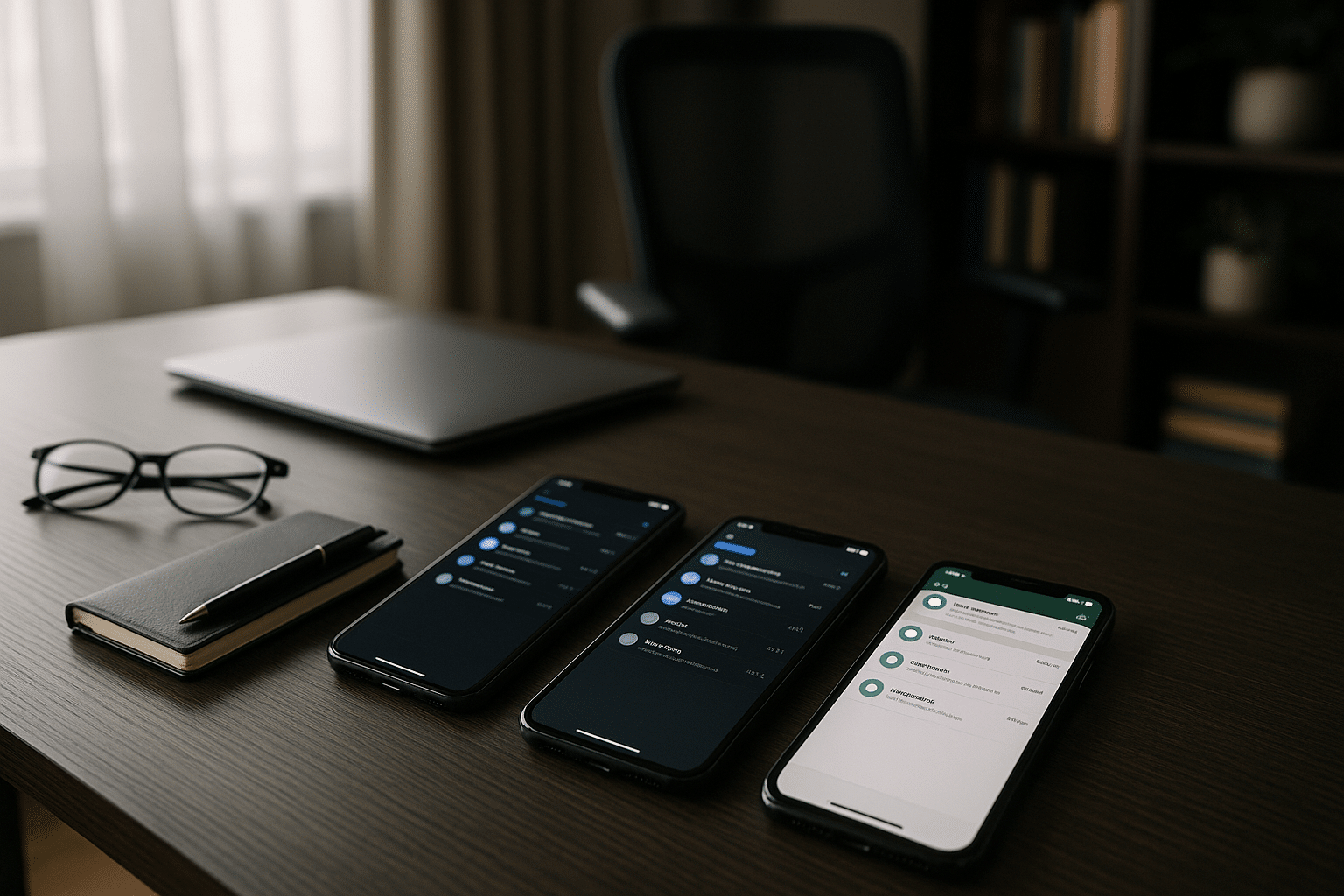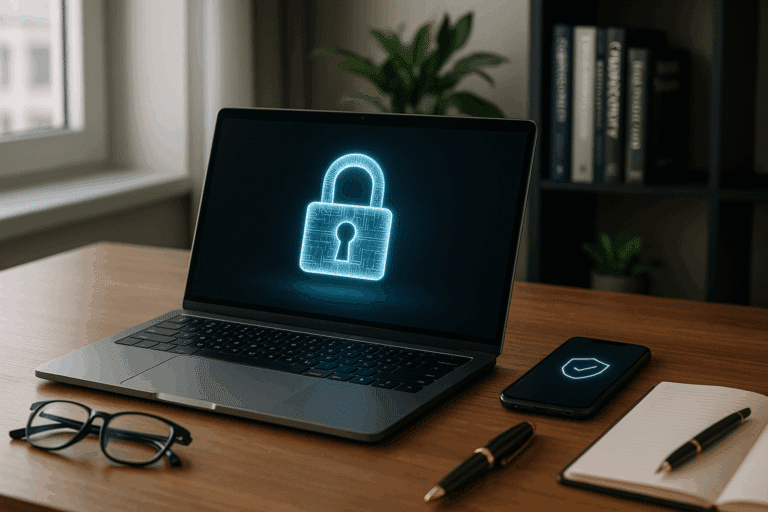Our personal and professional relationships often revolve around digital interactions, with instant messaging apps playing a pivotal role. Yet, in this age of seamless communication, one question remains paramount: How secure are our conversations? 🤔
It’s no secret that privacy and security are major concerns when it comes to digital communication. In an era where data breaches and cyber threats are increasingly common, it’s crucial to take active steps to protect our personal and professional communications. In this article, we’ll take a deep dive into the realm of secure messaging apps, helping you navigate through the technological maze and pick the best platform for your private conversations. 👍🔒
Our focus will be on apps that provide end-to-end encryption – a method of secure communication that prevents third-parties from accessing data while it’s transferred from one end system to another. In other words, the only people who can read the messages are the people participating in the conversation. We’ll also delve into other security features that these apps offer, such as self-destructing messages, password-protected chats, and more.
In the subsequent sections, we will explore the key features, pros and cons, and unique selling propositions of the top secure messaging apps. We will cover popular choices such as WhatsApp and Signal, as well as lesser-known yet highly secure options like Wire and Threema. By comparing these apps side-by-side, we’ll help you make an informed choice about which app best fits your security needs.👌📱
As we dig deeper, we’ll also touch on the importance of secure digital communication in various fields such as business, journalism, and even personal relationships. After all, secure communication isn’t just about protecting sensitive information; it’s about ensuring your private conversations remain private, regardless of their content. 🛡️
Furthermore, for those tech enthusiasts among you, we’ll also provide some insight into the technical mechanics that make these apps so secure. From encryption algorithms to secure protocols, we’ll give you a glimpse into the world behind the user-friendly interfaces of these apps. But don’t worry – we’ll keep the tech jargon to a minimum and explain everything in a way that’s easy to understand, even for non-techies. 👨💻
Lastly, we will provide some practical tips and best practices to help you maximize the security of your digital conversations, regardless of the platform you choose. This will include advice on strong password creation, enabling two-factor authentication, and more. After all, even the most secure app can’t protect your conversations if you don’t follow basic security protocols. 🚀
Whether you’re a privacy-conscious individual, a business professional dealing with sensitive information, or simply someone who wants to keep their chats away from prying eyes, this guide will equip you with the knowledge you need to make the right choice. Let’s delve into the intriguing world of secure messaging apps, shall we? 🌐
Securing Your Private Conversations: An Introduction to Encrypted Messaging Apps
With the prevalence of cyber threats in today’s digital world, security has become paramount in any form of communication. One of the primary areas of concern is the exchange of messages. As we increasingly depend on digital platforms for our private conversations, the need for secure messaging apps has never been higher. This article will delve into the best messaging apps for private conversations, providing insights into their security features, ease of use, and overall performance.
The use of secure messaging apps is not limited to individuals who are concerned about their privacy. Businesses can also benefit significantly from these apps. In a corporate setting, confidential information is frequently exchanged, and ensuring that these conversations remain private can be critical to a company’s success and credibility. Thus, understanding the different available options is crucial.
To get a better idea of the best messaging apps for private conversations, consider watching this comprehensive YouTube video titled “The Best Secure Messaging Apps for Private, Encrypted Communication” by Tech Insider.
Signal vs. Telegram vs. WhatsApp: A Comparative Analysis
Three of the most widely used secure messaging apps are Signal, Telegram, and WhatsApp. These apps have each made a name for themselves by offering robust security features combined with user-friendly interfaces. However, they differ in several aspects, which can impact their suitability for different users.
Let’s take a detailed look at how each app stacks up against the others, starting with Signal. Signal is known for its end-to-end encryption, a feature that ensures only the sender and recipient can read a message. Not even the company behind Signal can access your messages. On top of this, Signal’s code is open-source, meaning anyone can inspect it to ensure there are no backdoors or security vulnerabilities.
Next, we have Telegram, a messaging app that also provides end-to-end encryption, though it’s not enabled by default as it is with Signal. Instead, users need to start a “Secret Chat” to ensure their messages are encrypted. Like Signal, Telegram’s code is also open-source. However, its encryption protocol is proprietary, which some security experts have criticized as being potentially vulnerable to cyber threats.
Finally, WhatsApp offers end-to-end encryption by default for all its conversations. Despite this, some privacy advocates have criticized WhatsApp due to its affiliation with Facebook, which has faced several privacy-related controversies in the past.
| App | End-to-End Encryption | Open-Source Code | Proprietary Encryption |
|---|---|---|---|
| Signal | Yes (default) | Yes | No |
| Telegram | Yes (optional) | Yes | Yes |
| Yes (default) | No | No |
Diving Deeper: Additional Security Features
While end-to-end encryption is a crucial feature in secure messaging apps, it’s not the only one. Other features, such as self-destructing messages, password protection, and data privacy policies, also play a significant role in keeping your private conversations safe.
Signal, for instance, allows users to set a timer for their messages, after which they will disappear from both the sender’s and recipient’s devices. Telegram also offers this feature in its Secret Chats. WhatsApp, on the other hand, recently introduced a similar feature called “Disappearing Messages.”
In terms of data privacy policies, Signal stands out by collecting minimal user data. The only piece of personal information it collects is the user’s phone number. Telegram and WhatsApp, however, collect significantly more user data, which has drawn criticism from privacy advocates.
To see these features in action, consider watching this YouTube video titled “Signal App Tutorial – Everything You Need To Know!” by Techboomers. It provides a detailed walkthrough of Signal’s various features, including its self-destructing messages and minimal data collection practices.
Choosing the Right App for Your Private Conversations
Now that you’re familiar with the different secure messaging apps and their features, it’s essential to consider which one is the best fit for your specific needs. Your choice will largely depend on your priorities. For instance, if your primary concern is privacy, Signal’s minimal data collection practices might appeal to you. On the other hand, if you prioritize user experience, you might prefer WhatsApp for its familiar interface and widespread adoption.
Ultimately, the best messaging app for private conversations is the one that strikes the right balance between security, privacy, and usability for you. Regardless of which app you choose, remember to always exercise caution when sharing sensitive information. Even the most secure platforms can be vulnerable to human error.
As you navigate this digital age, the importance of secure communication cannot be overstated. Stay safe, and keep your conversations secure!

Conclusion
Throughout the course of this insightful article, we have journeyed through a multitude of concepts intricately woven into the world of Information Technology and Engineering. We delved into the depths of crucial technicalities, dissecting them meticulously in order to present you with a comprehensive understanding of the subject matter. It is our hope that the expert insights and detailed analysis provided in this article will prove useful and beneficial to you in your professional pursuits.
A brief recapitulation of the main points discussed is as follows: We initiated our exploration by dissecting the architecture of software systems, elaborating on its critical components and explaining how they interact to form a holistic structure. This was followed by an exploration of the principles of engineering, emphasizing its pivotal role in the creation and maintenance of robust and efficient systems.
Our journey then veered towards the significance of technological trends, explaining how they impact the functionality and efficiency of systems. We also highlighted the importance of staying updated with these trends in order to sustain and enhance competitive advantage in the rapidly evolving digital landscape.
We underscored the importance of best practices in IT and Engineering, such as maintaining code quality, employing robust testing strategies, and adhering to ethical considerations. Furthermore, we examined the role of innovation in propelling the fields of IT and Engineering to new heights.
It is essential to recognize that the topics discussed herein are not just abstract theories, but are actively influencing the world around us. They are instrumental in driving technological advancements, enhancing operational efficiency, and transforming businesses and industries at a global scale.
We encourage you to apply the knowledge you’ve acquired from this article in your professional endeavors. If you found this content helpful, feel free to share it among your network and spark enlightening discussions. We are eager to hear your thoughts, ideas, and experiences. So, don’t hesitate to leave your comments below. 👇
To delve deeper into the subject matter, you may refer to the following sources:
source 1,
source 2, and
source 3.
Remember, learning is a lifelong process and there is always room for improvement. So, keep exploring, keep learning, and keep growing!
Together, let’s shape a more technologically adept and innovative future! 🚀🌐
Thank you for accompanying us on this enlightening journey. Stay tuned for more in-depth articles in the future. Until next time! 👋
References:
reference 1,
reference 2, and
reference 3.



